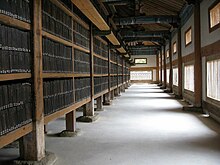
Back أدب كوري Arabic Корейска литература Bulgarian Koreanische Literatur German Literatura de Corea Spanish ادبیات کرهای Persian Littérature coréenne French कोरियाई साहित्य Hindi Koreai irodalom Hungarian Sastra Korea ID Letteratura coreana Italian
This article needs additional citations for verification. (March 2024) |

 |
| Part of a series on the |
| Culture of Korea |
|---|
| Society |
| Arts and literature |
| Other |
| Symbols |
|
Korean literature is the body of literature produced by Koreans, mostly in the Korean language and sometimes in Classical Chinese. For much of Korea's 1,500 years of literary history, it was written in Hanja. It is commonly divided into classical and modern periods, although this distinction is sometimes unclear.
Classical Korean literature has its roots in traditional folk beliefs and folk tales of the Korean peninsula.[citation needed] There are four major traditional poetic forms: hyangga ("native songs"); byeolgok ("special songs"), or changga ("long poems"); sijo ("current melodies"); and gasa ("verses"). Other poetic forms that flourished briefly include the kyonggi-style, in the 14th and 15th centuries, and the akchang ("words for songs") in the 15th century. The most representative akchang is Yongbi och'on ka (1445–47; Songs of Flying Dragons), a cycle compiled in praise of the founding of the Yi dynasty. Korean poetry originally was meant to be sung, and its forms and styles reflect its melodic origins. The basis of its prosody is a line of alternating groups of three or four syllables, which is probably the most natural rhythm to the language.
One famous earliest poetry or lyric song was the Gonghuin (Konghu-in) by Yeo-ok during Gojoseon.